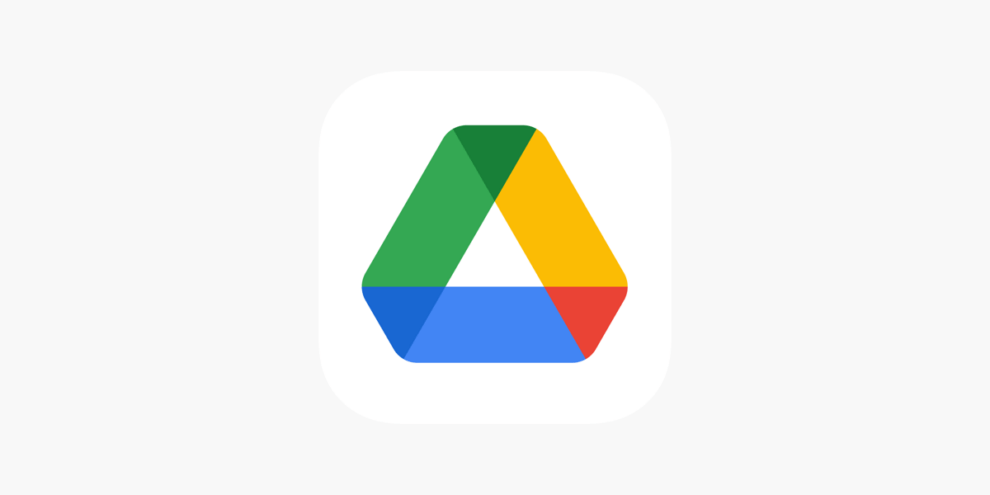When Google Drive launched in April 2012, it entered a crowded marketplace already dominated by established players like Dropbox, iCloud, and Microsoft OneDrive. Yet, within just a few years, Google Drive established itself as the go-to cloud storage solution for millions of users worldwide. From its generous free storage allowance to its seamless integration with Google’s ecosystem, Drive has consistently delivered a compelling value proposition that keeps users coming back. But what exactly makes Google Drive stand out? And how did it evolve into the ultimate cloud storage solution?
The Genesis of Google Drive: A Natural Extension of Google’s Vision
Google Drive didn’t emerge in isolation—it was born out of Google’s broader vision for organizing and accessing information. By 2012, cloud storage had become a critical component of modern computing, allowing users to store files remotely and access them from anywhere. Recognizing this trend, Google sought to capitalize on its expertise in search and organization by introducing a service that combined convenience with ease of use.
Google Drive’s origins trace back to earlier experiments like Google Docs, which allowed users to create and collaborate on documents online. These early efforts demonstrated Google’s proficiency in building collaborative tools, setting the stage for Drive’s launch. By integrating file storage with real-time collaboration, Drive promised a holistic solution that catered to both personal and professional needs.
Generous Free Storage: An Immediate Draw
One of Google Drive’s earliest advantages was its liberal free storage policy. At launch, users received 15 GB of free storage, shared across Gmail, Google Photos, and Google Drive. This generous allocation was unprecedented at the time, as competitors like Dropbox offered far more restrictive limits. For users accustomed to paying for every gigabyte of storage, Google Drive’s free tier felt like a revelation.
The 15 GB cap was strategically designed to accommodate most users’ basic needs while encouraging upgrades for power users. Those who exceeded their limit could opt for paid tiers starting at $1.99/month for 100 GB, making Drive accessible to a wide range of budgets. This pricing structure struck a balance between attracting casual users and monetizing heavy users, ensuring steady revenue streams.
Seamless Integration with Google’s Ecosystem
Google Drive’s true strength lay in its seamless integration with other Google services. For users already embedded in the Google ecosystem, Drive felt like a natural extension of their digital lives. Documents created in Google Docs, Sheets, or Slides could be stored directly in Drive, allowing for easy access and collaboration. Similarly, photos uploaded via Google Photos automatically synced with Drive, creating a unified repository for multimedia files.
This interoperability extended beyond Google’s own products. Drive’s compatibility with third-party apps and browsers made it a versatile choice for businesses and individuals alike. Whether you were editing spreadsheets in Excel, managing projects in Trello, or organizing notes in Evernote, Drive provided a centralized hub for storing and retrieving files.

Security and Reliability: Building Trust
Cloud storage hinges on trust, and Google Drive has consistently prioritized security and reliability. From its inception, Drive implemented end-to-end encryption for data in transit, ensuring that files remained protected during transmission. Server-side encryption further safeguarded stored data, giving users peace of mind about the safety of their files.
Google’s commitment to uptime and disaster recovery added another layer of assurance. With data centers spread across the globe, Drive minimized the risk of downtime due to regional outages. Additionally, regular backups and version control allowed users to recover lost files with ease. These measures reinforced Google’s reputation as a dependable provider, distinguishing it from less scrupulous competitors.
Collaboration and Productivity: Driving Adoption
Perhaps the most transformative aspect of Google Drive is its emphasis on collaboration. Unlike traditional storage solutions that treated files as static entities, Drive embraced real-time collaboration as a core feature. Multiple users could edit the same document simultaneously, with changes reflected instantly across all participants. This capability revolutionized teamwork, making it easier than ever to coordinate efforts regardless of physical distance.
Moreover, Drive’s commenting and suggestion features streamlined feedback loops, allowing teams to iterate efficiently. Assignees could be tagged in comments, ensuring accountability and clarity. These tools not only enhanced productivity but also fostered stronger interpersonal dynamics, making remote collaboration feel almost as productive as face-to-face interactions.
Expanding Beyond Basic Storage: Advanced Features
Over time, Google Drive evolved beyond its initial scope, introducing features that elevated it from a mere storage service to a full-fledged productivity platform. OCR (Optical Character Recognition) enabled users to extract text from scanned documents, simplifying paperless workflows. PDF annotation tools allowed users to mark up files directly within Drive, eliminating the need for external software.
OCR and annotation capabilities were particularly appealing to professionals in fields like legal, education, and healthcare. By streamlining document processing, Drive reduced administrative burdens and improved efficiency. These enhancements underscored Google’s ability to anticipate user needs and deliver innovative solutions.
Mobile Accessibility: On-the-Go Convenience
The rise of smartphones accelerated Drive’s adoption by making it accessible anytime, anywhere. The Drive mobile app supported all major platforms, including iOS and Android, ensuring broad compatibility. Offline access allowed users to view and edit files even without an internet connection, a feature that proved invaluable during travel or in areas with spotty connectivity.
Synchronization across devices ensured that changes made on one platform were reflected instantly elsewhere. Whether you were working on a laptop, tablet, or phone, Drive kept your files current and accessible. This level of fluidity made Drive indispensable for busy professionals juggling multiple devices.
Enterprise Solutions: Scaling Up
For businesses, Google Drive’s scalability and affordability made it an attractive option. Admins could manage permissions, monitor usage, and enforce security policies through Google Workspace (formerly G Suite). Integration with other enterprise tools, such as Google Forms, Sheets, and Calendar, created a cohesive suite of productivity solutions.
Advanced features like shared drives and team folders simplified file management for large organizations. Shared drives allowed teams to collaborate without duplicating files, reducing clutter and improving accountability. These enterprise-grade capabilities ensured that Drive met the needs of both small startups and Fortune 500 companies.
The Future of Google Drive: Evolving with Trends
As the cloud storage landscape continues to evolve, Google Drive remains at the forefront of innovation. Artificial intelligence and machine learning are being integrated into Drive, offering features like smart sorting, automated tagging, and predictive analytics. These advancements aim to simplify file management and enhance user experience.
Additionally, Drive is exploring new formats, such as virtual reality (VR) and augmented reality (AR), to create immersive experiences for users. As more industries embrace digital transformation, Drive’s adaptability ensures it will remain a vital tool for staying ahead of the curve.
Google Drive’s journey from a fledgling cloud storage service to the ultimate solution is a testament to its adaptability and user-centric design. By offering generous free storage, seamless integration, robust security, and advanced collaboration tools, Drive has consistently delivered value that resonates with users. Its ability to evolve with emerging trends and address evolving needs ensures its continued relevance in the digital age.
The story of Google Drive is more than just a tale of success—it’s a blueprint for how to build enduring products. By prioritizing simplicity, reliability, and innovation, Google has created a platform that not only meets current demands but anticipates future ones. As we look to the horizon, it’s clear that Google Drive will continue to play a pivotal role in shaping how we store, share, and collaborate in the years to come.
















Add Comment